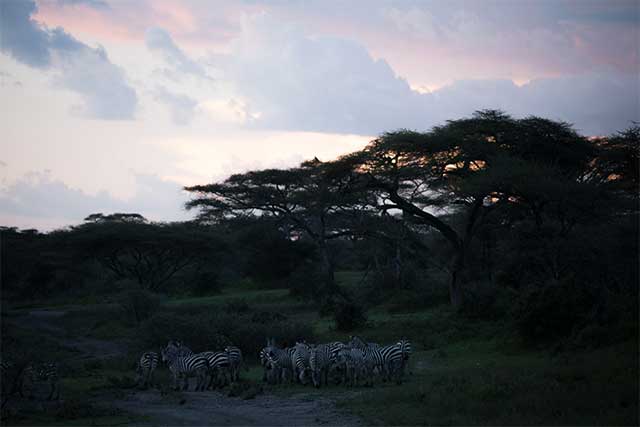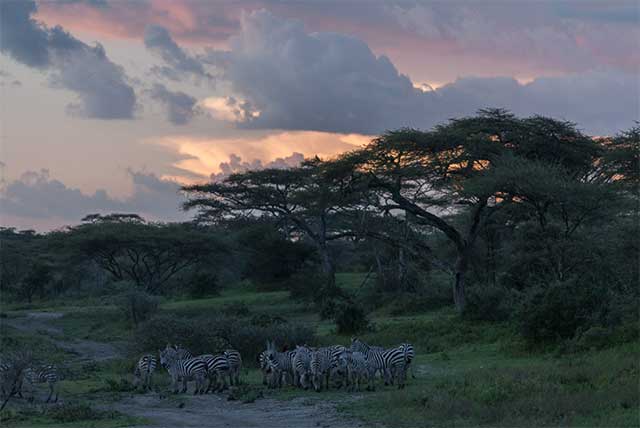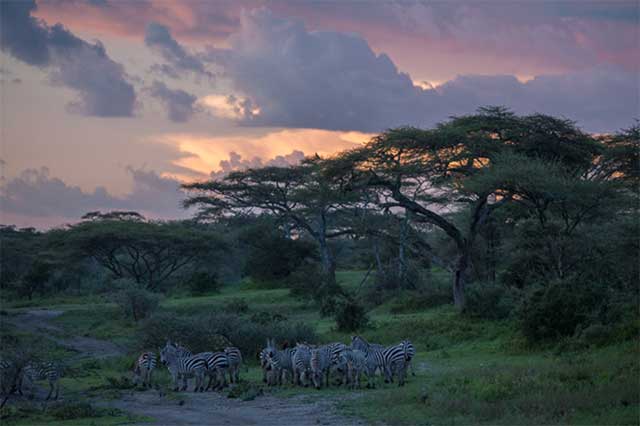Just like a painter uses paint and a brush as tools to create art, or a musician uses an instrument to create music, the photographer uses their camera to capture scenes and create beautiful images.
In the end, the camera is just a tool for our creativity. And even though it has a mini-computer inside processing digital images, it still doesn’t do a great job capturing exactly what we see, and struggles in difficult lighting situations.
This is when processing in Lightroom becomes essential, so that we, as photographers, can re-create the magical moments we have witnessed and tried to capture.
I am going to show you an example of an image I took in the Serengeti National Park in Tanzania, where the camera struggled to capture the beautiful scene and colors, and how I was able to recover most of the details and make that image stand out with just a few little easy tweaks in Lightroom.
Here’s the starting image:

Since it was taken at sunset, right after a storm had passed, the sky was filled with incredible colors. But because cameras can’t capture both details in the dark and the highlights, I had to find a balance between a sky that isn’t too overexposed, and a foreground that’s not too dark.
Once I exported my RAW file to Lightroom, I simply used a few sliders to bring all those details back out.
With the Highlights slider pushed to the left, I brought back details in the cloudy sky, and with the Shadows slider pushed to the right, I brightened the foreground.

With just those two sliders (it took me two seconds), I already have a much nicer image than the starting one.
Next, I tweaked the White Balance slider to my liking, so I could have some warmer colors, and pushed the Vibrance slider a bit to the right, to enhance the beautiful colors in the sky.
As a final touch, I added a little bit of vignetting to darken the edges of the frame and bring the attention of the viewer to the center.
And here’s the result:

The entire process didn’t even take a minute of my time.
Since Lightroom offers non-destructive editing (your original images aren’t touched), you can have fun and play with the sliders as much as you want without worries. That’s the best way to learn how to use the software, and develop your own style.
I’ve also guided you through the process via video recording.

